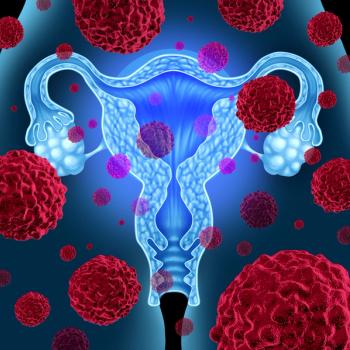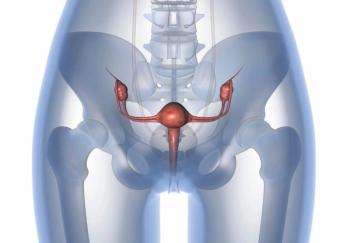
FDA Grants Priority Review to Olaparib, Bevacizumab Combination for Ovarian Cancer
The priority review was based on results from the phase III PAOLA-1 trial comparing the addition of olaparib to bevacizumab vs the standard-of-care alone.
A supplemental new drug application (sNDA) for olaparib (Lynparza) in combination with bevacizumab (Avastin) has been accepted and granted priority review by the FDA for the maintenance treatment of patients with advanced ovarian cancer who are in complete or partial response to first-line platinum-based chemotherapy with bevacizumab, according to Astrazeneca and Merck, the developers of the drug.
A Prescription Drug User Fee Act (PDUFA) date is currently set for the second quarter of 2020.
The priority review was based on results from the double-blind phase III PAOLA-1 trial, which were published in The New England Journal of Medicine. The trial compared olaparib (300 mg twice daily) when added to standard-of-care (SoC) bevacizumab vs bevacizumab alone in patients with advanced FIGO stage III-IV high grade serous or endometroid ovarian, fallopian tube, or peritoneal cancer who had a complete or partial response to first-line treatment with platinum-based chemotherapy and bevacizumab.
The results suggested that olaparib added to bevacizumab reduced the risk of disease progression or death by 41% (HR, 0.59; 95% CI, 0.49-0.72; P < 0.001) and improved progression-free survival (PFS) to a median of 22.1 months vs 16.6 months for patients treated with bevacizumab alone. The safety and tolerability profiles were consistent with previous trials for each medicine.
The most common adverse events (AEs) that occurred in ≥20% of patients treated with olaparib plus bevacizumab compared to bevacizumab alone were fatigue (53% vs 32%, respectively), nausea (53% vs 22%), hypertension (46% vs 60%), anemia (41% vs 10%), lymphopenia (24% vs 9%), vomiting (22% vs 11%), and arthralgia (22% VS 24%). Grade 3 or higher AEs occurred in 57% of the combination arm and 51% of the bevacizumab monotherapy arm. Grade 3 or higher AEs were hypertension (19% vs 30%, respectively), anemia (17% vs <1%), lymphopenia (7% vs 1%), fatigue (5% vs 1%), neutropenia (6% vs 3%), nausea (2% vs 1%), diarrhea (2% each), leukopenia (2% vs 1%), vomiting (1% vs 2%), and abdominal pain (1% vs 2%).
AEs led to dose interruption in 54% of patients on olaparib plus bevacizumab vs 24% on bevacizumab alone, while 41% of patients on olaparib plus bevacizumab had a dose reduction vs 7% on bevacizumab alone. Discontinuation of treatment occurred in 20% of patients on olaparib plus bevacizumab vs 6% on bevacizumab alone.
Olaparib is currently the only PARP inhibitor being evaluated in 2 positive randomized phase III trials in the first-line setting for advanced ovarian cancer. Additionally, based on the SOLO-1 trial, it is the only PARP inhibitor approved in the US as a first-line therapy for the treatment of women with BRCA-mutated advanced ovarian cancer after response to frontline platinum-based chemotherapy.
Reference:
LYNPARZA (olaparib) regulatory submission granted priority review in US for 1st-line maintenance treatment with bevacizumab in advanced ovarian cancer [news release]. Kenilworth, New Jersey. Published January 13, 2020. astrazeneca-us.com/media/press-releases/2019/lynparza-olaparib-regulatory-submission-granted-priority-review-in-us-for-1st-line-maintenance-treatment-with-bevacizumab-in-advanced-ovarian-cancer-01132020.html. Accessed January 13, 2020.
Newsletter
Stay up to date on recent advances in the multidisciplinary approach to cancer.

















































































